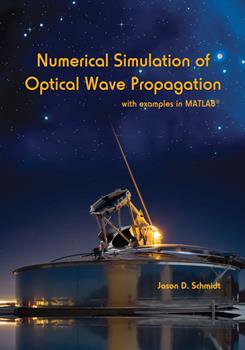|
As discussed in Ch. 1, scalar diffraction theory is the physical basis of wave-optics simulations. A result of this theory is that propagation of electromagnetic waves through vacuum may be treated as a linear system. For monochromatic waves, the vector magnitude of the electric field in the observation plane of a system is the convolution of the vector magnitude of the electric field in the source plane and the free-space impulse response.5 Consequently, the tools of linear-systems theory and Fourier analysis are indispensable for studying wave optics. These topics are discussed in Ch. 4 and beyond. In those chapters, discrete Fourier transforms are applied to obtain computationally efficient algorithms for the simulations. First, the basic computational algorithms must be discussed. As in many areas of science and engineering, most problems encountered while researching complex optical systems are analytically intractable. Consequently, most calculations regarding the inner workings and performance of optical systems are performed by numerical simulation on computers. Fortunately, sampling theory and discrete-Fourier-transform (DFT) theory provide many important lessons for optics researchers who perform such simulations. With due consideration to the limitations imposed by performing computations on sampled functions, there is much to be gained from numerical simulation of optical-wave propagation. 2.1 Basics of Digital Fourier Transforms This section covers the basics of computing DFTs that match the corresponding analytic results. This includes proper scaling, correct use of spatial and spatial frequency coordinates, and use of DFT software. 2.1.1 Fourier transforms: from analytic to numerical There are a few common conventions for defining the FT operation and its inverse. |
|
|


